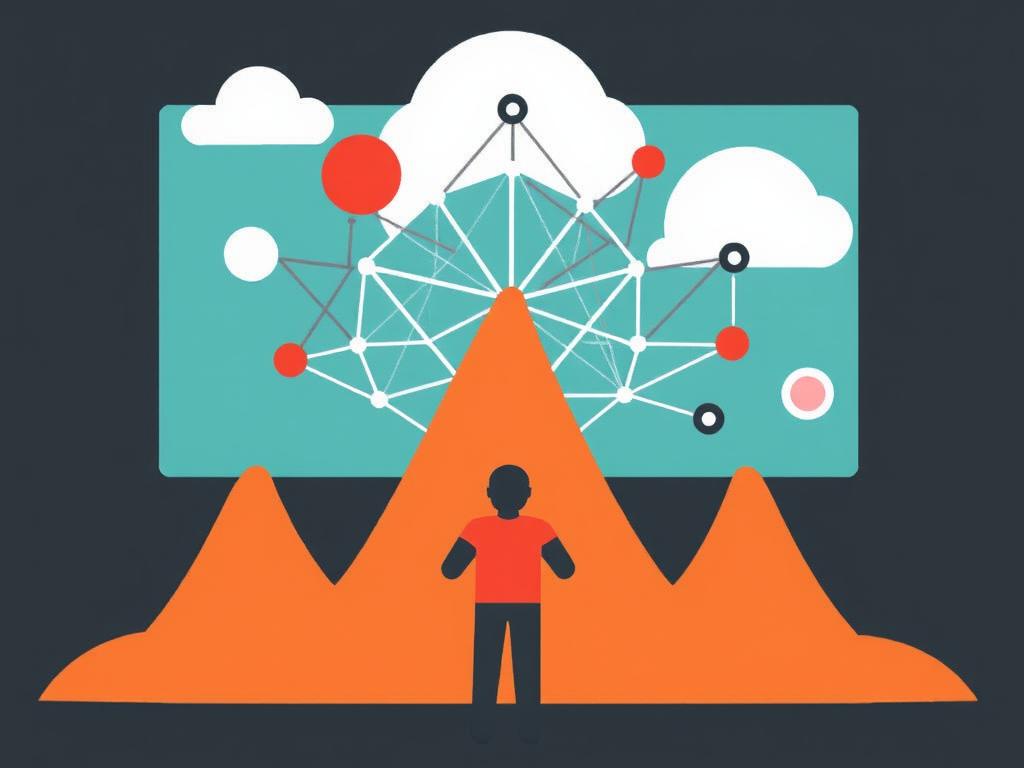Understanding Meshnet: A New Paradigm in Networking

In today’s increasingly connected world, traditional internet infrastructure often struggles to keep up with demands for privacy, security, and freedom. Enter Meshnet, a revolutionary network design that redistributes connectivity in a way that empowers users and resists centralized control. At its core, a Meshnet is a decentralized network where every node (device) connects directly or indirectly to other nodes without relying on a central server. This organic interconnection forms a resilient network that is inherently adaptive and decentralized. Unlike traditional networks, the absence of a single point of failure means that Meshnet can continue functioning even if some nodes go offline or face attacks.
The decentralized nature of Meshnet makes it uniquely suited to combat some of the most pressing issues of modern internet use: censorship and distributed denial of service (DDoS) attacks. Governments and centralized providers often impose strict censorship by controlling access points, while attackers target central servers to bring down services via DDoS. Meshnet disrupts this model by making it harder to pinpoint and disable critical components of the network, thereby preserving access and uptime.
How Meshnet Naturally Counters Censorship
Censorship on the internet typically involves blocking or restricting access to certain websites, platforms, or services. This is often done by controlling or filtering traffic at centralized points such as ISPs or major data centers. Meshnet challenges this approach by creating multiple pathways for data to travel. Because each node in the network can communicate independently, information flows through an ever-changing web of connections rather than a fixed route.
Key Strategies Meshnet Uses to Resist Censorship:
- Decentralization: With no single governing authority controlling the network nodes, it’s much harder for censors to impose restrictions across the entire network.
- Dynamic Routing: Data packets use multiple, constantly shifting paths to reach their destination, bypassing any blocked areas.
- Encryption and Anonymity: Many Meshnet implementations incorporate encryption, hiding the content and destination of messages from potential censors.
- Peer-to-Peer Distribution: Content is often stored and shared among multiple nodes, preventing easy takedown of specific data.
This layered resistance makes it near impossible for censors to block or filter traffic comprehensively, especially when networks span wide geographic areas with many independent participants.
Understanding DDoS Attacks and Why They’re a Problem
Before diving into how Meshnet mitigates DDoS attacks, it’s important to understand the threat itself. DDoS attacks occur when multiple compromised systems flood a target server or infrastructure with a barrage of fake traffic, aiming to overload it and cause disruption or complete shutdown. These attacks often target centralized servers, exploiting their vulnerabilities and single points of failure.
Traditional networks, particularly those relying on centralized servers or gateways, are vulnerable. If the critical node is overwhelmed, the entire service fails. This is why businesses and online platforms invest heavily in DDoS protection services, firewalls, and traffic monitoring to maintain uptime.
Why Meshnet is Different in Handling DDoS
Because Meshnet architecture distributes functions and traffic across numerous independent nodes, it creates structural redundancy and resilience that centralized systems lack. Here’s a detailed look into how Meshnet resists DDoS attacks:
| Meshnet Features | Impact on DDoS Attacks |
|---|---|
| Distributed Nodes | Eliminates single points of failure, making it difficult for attackers to target the entire network. |
| Adaptive Routing | Traffic can be rerouted dynamically to avoid congested or attacked nodes. |
| Peer-to-Peer Communication | Reduces reliance on any single server or gateway that could be targeted. |
| Resource Sharing | Load balancing occurs naturally as nodes share bandwidth and processing power. |
| Locality Awareness | Nodes connect preferentially to nearby peers, minimizing external attack vectors. |
In essence, attackers must overwhelm a vast, distributed collection of devices to have any meaningful impact — a task far more complex and resource-intensive than attacking a centralized server.
The Technical Mechanisms Behind Meshnet’s Resilience
Several technical innovations underlie Meshnet’s ability to resist censorship and DDoS. Below are some core mechanisms:
1. Distributed Hash Tables (DHTs)
Many Meshnet implementations use DHTs to efficiently locate data within the network. DHTs allow nodes to route requests by knowing only a fraction of the entire network’s structure, removing the need for centralized directories that censors or attackers could exploit.
2. Onion Routing and Encryption

By routing data through multiple nodes and encrypting it at each stage, Meshnet enhances privacy and avoids traffic analysis. Similar to Tor but within a decentralized mesh design, this adds a layer of obscurity critical in bypassing censorship.
3. Self-healing Network Topology
Since nodes in Meshnet automatically detect and adapt to changes in connectivity, the system can reroute traffic around blocked or attacked nodes, maintaining network health even under adverse conditions.
4. Incentive Models for Participation
To grow and maintain robust networks, some Meshnet projects incentivize users to share bandwidth and maintain online presence, further strengthening resistance to disruptions.
Popular Meshnet Projects Leading the Charge

Numerous Meshnet initiatives around the world demonstrate how this technology combats censorship and DDoS in practice. Let’s look at a few notable examples:
| Project | Primary Focus | How It Resists Censorship & DDoS |
|---|---|---|
| Yggdrasil | IPv6 Mesh Networking | Uses encrypted IPv6 connections and multi-path routing, making it almost impossible to block or overwhelm. |
| Althea | Community Internet Sharing | Users share internet access via mesh gateways, bypassing ISP censorship and distributing traffic loads. |
| cjdns | Cryptographic Routing | Implements strong cryptographic identities and decentralized routing algorithms to avoid centralized chokepoints. |
| Meshtastic | Low-power Radio Mesh for Messaging | Operates independently of internet infrastructure, enabling communication where censorship and DDoS are prevalent. |
These projects illustrate how decentralized meshnets foster not only technological resilience but also social empowerment by providing accessible, censorship-resistant communication alternatives.
Challenges and Considerations for Meshnet Adoption
As promising as Meshnets are, they face several challenges that users and developers must navigate.
- Scalability: While mesh networks are highly resilient, scaling them to cover large populations demands efficient routing algorithms and hardware capable of handling increased traffic.
- Latency & Bandwidth: Multi-hop routing can introduce delays and limit throughput compared to centralized networks with direct server access.
- User Adoption: The effectiveness of meshnets often depends on widespread participation, which means educating users and providing easy-to-use interfaces is crucial.
- Legal and Regulatory Issues: Some governments may attempt to outlaw or restrict meshnet hardware and software due to its censorship-resistant capabilities.
Despite these hurdles, ongoing research and technological advances continue to enhance meshnet usability and performance, signaling a bright future for decentralized connectivity.
Real-World Impact: Meshnet in Action
In regions experiencing heavy internet censorship or frequent DDoS attacks, mesh networks have already played vital roles in sustaining communication.
For example, during social uprisings or government-imposed internet shutdowns, activists use meshnets to share news and organize safely. Emergency responders sometimes deploy portable mesh networks to maintain communication when traditional systems fail. Across rural and underserved areas, meshnets provide affordable, reliable internet alternatives, empowering communities and increasing digital inclusivity.
These practical applications demonstrate how meshnets move beyond academic concepts to become powerful tools for digital freedom and security.
Conclusion
Meshnet represents a transformative step towards a more open, secure, and resilient internet. By decentralizing network infrastructure and distributing connectivity across countless nodes, meshnets inherently resist censorship and DDoS attacks that cripple traditional centralized systems. Though challenges remain in scaling and user adoption, the growing ecosystem of meshnet projects showcases an innovative vision for a freer internet. Whether protecting activists’ voices, enabling communication in remote areas, or defending against malicious attacks, meshnet technology underscores the power of collective connectivity and decentralization. As we move forward, embracing meshnets can help societies safeguard online freedoms in an era of increasing digital threats.
